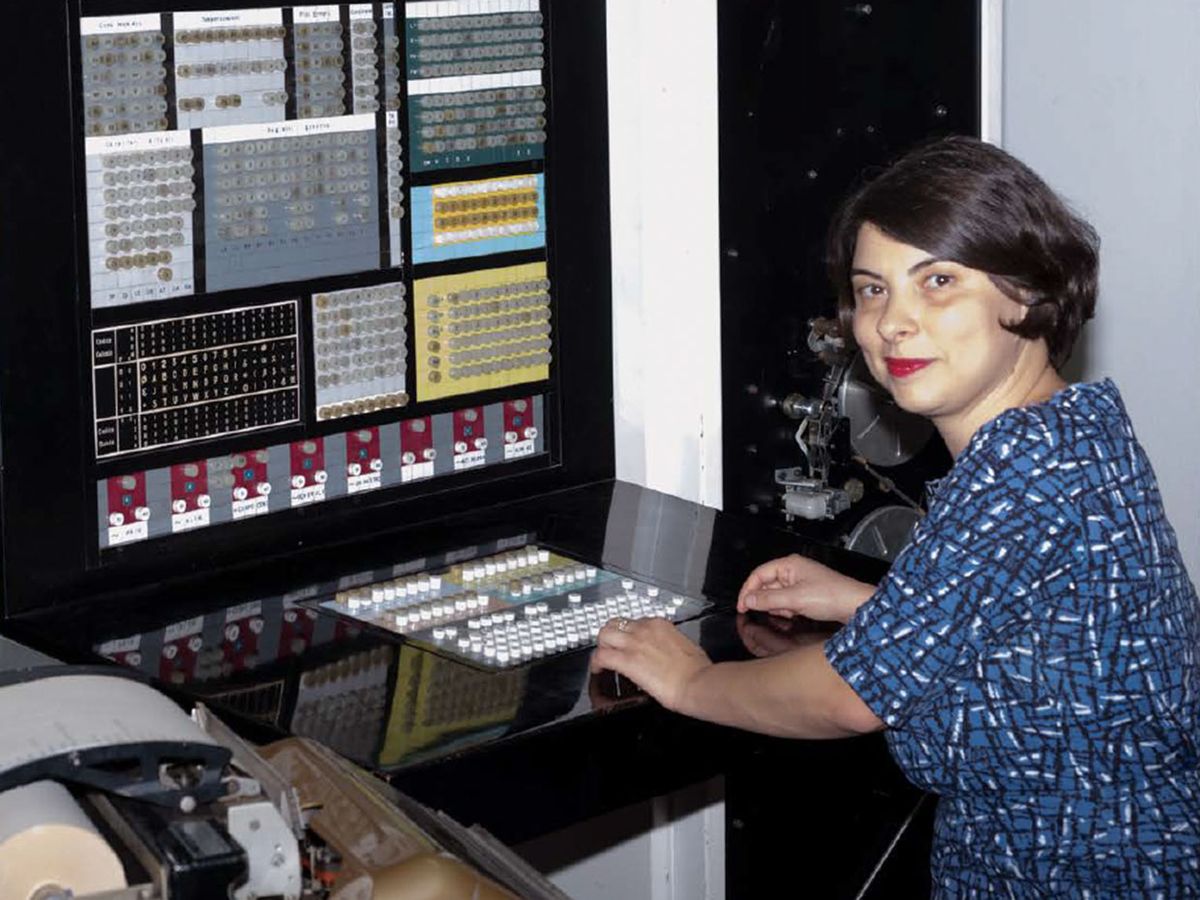About 10 years ago, Elisabetta Mori and some friends were doing research for an art exhibit on the theme of “archives of memories.”
“We approached the theme literally, and so we looked for old examples of physical memories—computer memories,” Mori recalls. “We tried to see the oldest computers built in Italy.” At the Museum of Computing Machinery in Pisa, they saw the Calcolatrice Elettronica Pisana, an early digital computer built by the University of Pisa in 1957 with the support of the Olivetti company. But the machine had long ago stopped working.
Then they heard about a working model of the ELEA 9003, Olivetti’s first commercial mainframe, introduced in 1959. They lost no time tracking it down.
This 9003 had originally belonged to a bank in Siena, where it was used for payroll, managing accounts, calculating interest rates, and the like. In 1972, the bank donated the computer to a high school in the Tuscan hill town of Bibbiena. And there it’s been ever since. Today, former Olivetti employees periodically travel to the ISIS High School Enrico Fermi to tend to the machine.
The mainframe’s sleek aluminum modular racks and peripherals occupy a large room, with Olivetti typewriters and calculators spread around the space. The technicians keep spare parts on hand, as well as original manuals and blueprints.
The encounter with the computer changed Mori’s life. She wrote a master’s thesis about it. Now, she is a Ph.D. candidate in the history of computing at Middlesex University in London. Mori’s article, “The Italian Computer: Olivetti's ELEA 9003 Was a Study in Elegant, Ergonomic Design,” describes the company’s heroic effort to launch the ELEA 9003. [In the photo at top, Mori is seated at the 9003's console.]
“The machine works, but it is fragile,” Mori says. The computer contains more than 40 kilometers of copper cable wrapped in woven glass fiber. “If you don’t run the computer regularly, it will stop working. If you move it, it will die.”
To forestall that eventuality, a local group called the Associazione Amici dell’Olivetti ELEA 9003 is raising funds to hire and train workers to maintain the computer. You can reach them at amicielea9003@gmail.com.
“Until I saw it working, I didn’t realize how complex, fascinating, and noisy these early computers were,” Mori says. “I would have missed one big part of the story.”
Jean Kumagai is the Executive Editor at IEEE Spectrum. She holds a bachelor's degree in science, technology, and society from Stanford University and a master's in journalism from Columbia University.



